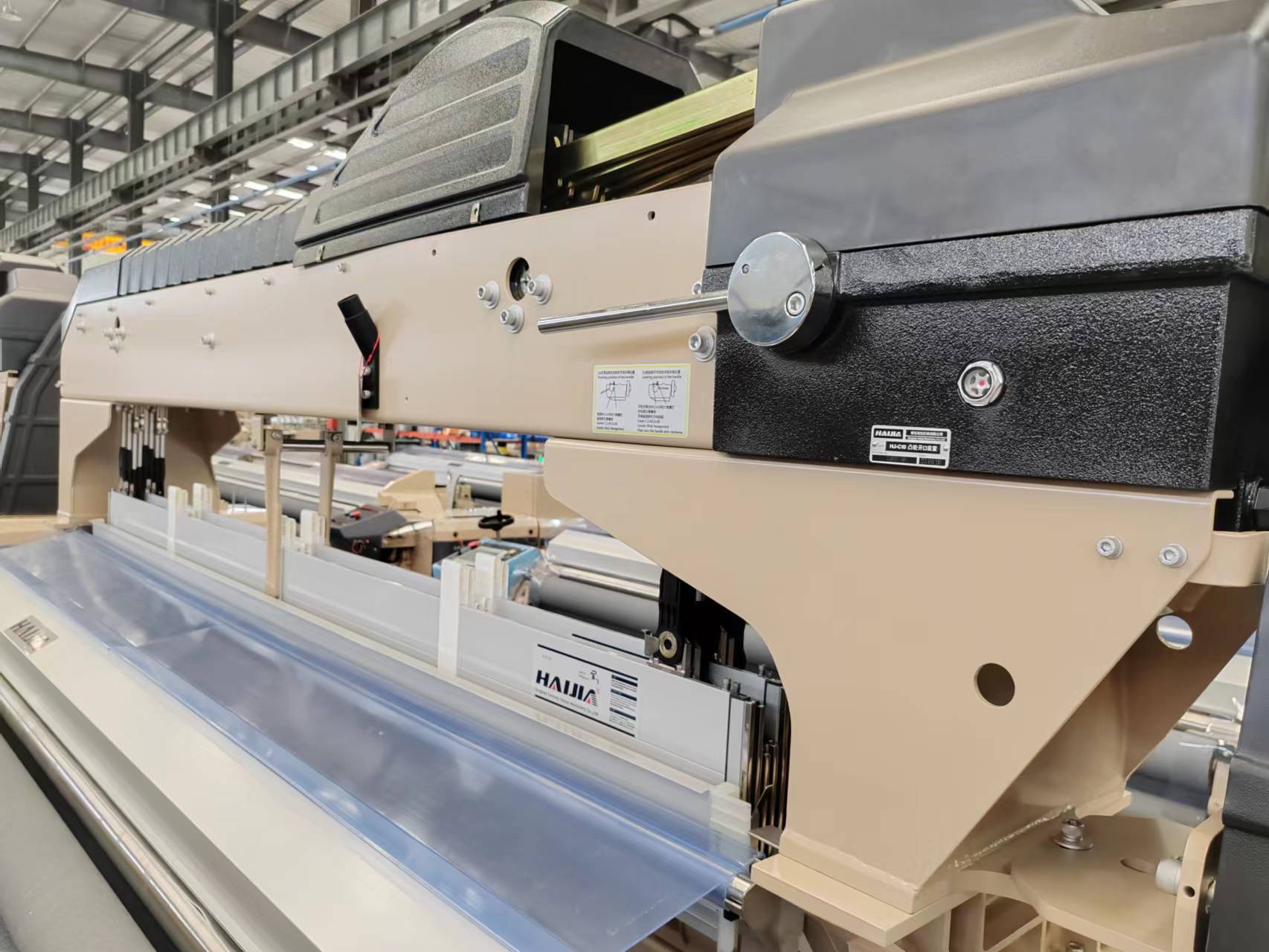Tel: +86-532-83130887 Email: eiffel@qdhaijia.net
Views: 630 Author: Site Editor Publish Time: 2024-07-01 Origin: Site









Water jet weaving has become a popular method in fabric production due to its efficiency and versatility. However, it is important to understand the environmental impact of this technique. In this article, we will explore the environmental consequences of water jet weaving and discuss sustainable solutions and alternatives that can help mitigate its negative effects. By gaining a deeper understanding of the environmental implications of water jet weaving, we can work towards more sustainable and eco-friendly practices in the textile industry.
Water jet weaving has become a popular method in the textile industry due to its efficiency and reduced environmental impact. Unlike traditional weaving techniques that require multiple steps and consume significant amounts of water and energy, water jet weaving machines utilize high-velocity water jets to interlace the yarns, eliminating the need for additional processes such as sizing and warping.
One of the major environmental consequences of water jet weaving is the substantial reduction in water consumption. Traditional weaving machinery requires large quantities of water for various processes, including yarn preparation and fabric finishing. In contrast, water jet weaving machines use water only during the actual weaving process, significantly minimizing water usage. This reduction in water consumption not only conserves this precious resource but also helps to alleviate the strain on local water supplies.
Furthermore, water jet weaving also reduces energy consumption compared to conventional weaving methods. By eliminating the need for additional processes such as sizing and warping, water jet weaving machines require less energy to produce the same amount of fabric. This energy-saving feature not only contributes to a decrease in greenhouse gas emissions but also helps to mitigate the overall carbon footprint of the textile industry.
In addition to its water and energy-saving benefits, water jet weaving also has a positive impact on worker safety and health. Traditional weaving machinery often involves the use of hazardous chemicals, such as sizing agents, which are used to strengthen the yarns and improve fabric quality. These chemicals can pose health risks to workers, as well as contribute to water pollution during the fabric finishing process. Water jet weaving eliminates the need for sizing agents, creating a safer working environment and reducing the release of harmful chemicals into the environment.
In today's rapidly changing world, finding sustainable solutions and alternatives has become more crucial than ever. As we face various environmental challenges, it is imperative to explore innovative ways to minimize our impact on the planet. One such solution that has gained significant attention is the water jet weaving machine.
Water jet weaving machines are revolutionizing the textile industry by providing a sustainable alternative to traditional weaving methods. Unlike conventional machines that rely on chemicals and excessive energy consumption, water jet weaving machines utilize the power of water to create intricate patterns and designs on fabrics. This eco-friendly approach not only reduces the carbon footprint but also eliminates the need for harmful chemicals, making it a safer option for both the environment and workers.
The key advantage of water jet weaving machines lies in their ability to conserve water. These machines use a minimal amount of water during the weaving process, ensuring efficient utilization and preventing wastage. Additionally, the water used can be easily treated and recycled, further reducing the overall water consumption. This makes water jet weaving machines a sustainable choice, particularly in regions facing water scarcity.
Moreover, water jet weaving machines offer enhanced flexibility and precision. With advanced technology and computerized controls, these machines can create intricate patterns with utmost accuracy. This eliminates the need for manual labor and reduces material wastage, resulting in cost savings for manufacturers. Additionally, the versatility of water jet weaving machines allows for the production of a wide range of fabrics, catering to diverse market demands.
Incorporating sustainable practices in the textile industry goes beyond utilizing water jet weaving machines. Weaving machinery as a whole plays a crucial role in achieving sustainability goals. By embracing energy-efficient technologies and optimizing production processes, manufacturers can significantly reduce their environmental impact. This includes minimizing energy consumption, reducing waste generation, and adopting eco-friendly materials.
Water jet weaving machines offer numerous environmental advantages over traditional machinery, contributing to a more sustainable and eco-friendly textile industry. These machines reduce water consumption, energy usage, and promote worker safety and health. The adoption of water jet weaving technology is crucial in minimizing the environmental consequences associated with textile production. Sustainable solutions and alternatives are vital for the future of our planet, and the emergence of water jet weaving machines has paved the way for a more eco-friendly industry. By utilizing these machines and embracing sustainable practices, harmful chemical reliance can be reduced, water can be conserved, and a greener future can be created. Manufacturers must invest in weaving machinery that aligns with these values to meet the growing demand for sustainable products and make a positive impact on the environment.